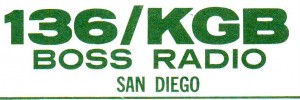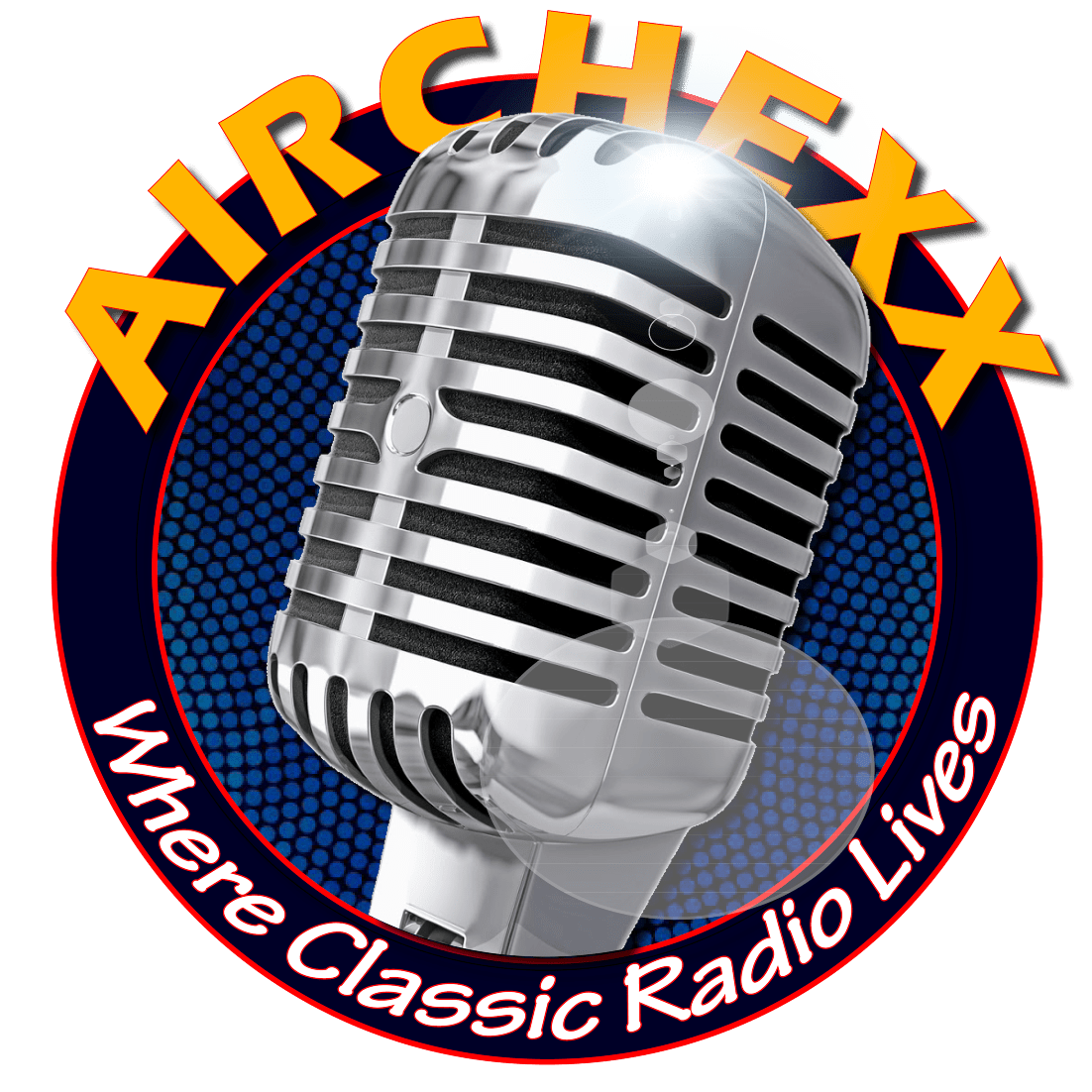…From the station that’s movin’ on up KGB #1!!
Somehow, they all claimed to be number one! As part of the jock patter, anyway!
Here’s someone we haven’t featured yet. Steve Jay sounds typical of the way most Deejays sounded in 1965, or so that’s what most of us remember! At twelve minutes in length, this re-mastered tape recording highlights one of the legendary stations in California history. Strangely enough, while it seems that there are a lot of recordings of other big California stations from this era, such as 93 KHJ Los Angeles, and 610 KFRC San Francisco, there don’t seem to be many recordings from KGB. Regardless, we think you’ll enjoy this slice of Radio History!
Listen for a full KGB 20/20 Newscast read by Brett Lewis at 4:30 in.
As always, we call upon our California radio experts out there to fill us in on the minute details.




when did the Bill Drake format take over at KGB? this must have been close to the time it started at KHJ. there sure was a lot of yak and clutter here. “28 minutes before 5” hadn’t yet given way to “4:32”.
What you hear here is Drake. He’d been consulting since 1964. Boss Radio (or at least the “sneak preview”) hit KHJ 19 days after this aircheck. By summer, KGB was calling itself Boss Radio, had the jingles and most of the formatics. It’s worth remembering that KHJ was not just Bill Drake, but his local P.D., Ron Jacobs, and a lot of Jacobs’ ideas ended up spreading through the RKO chain as “Drake format”. In fact, when Jacobs quit in 1969, he mentioned RKO’s “Xerox mentality” as being one of the reasons.
The protocol for time checks was less rigid during the early weeks of Boss Radio at KHJ, as well. Check elsewhere on the net for good examples.
Never heard a San Diego aircheck before. If there are any KCBQ ‘checks, I should like to hear them. History buffs should listen in starting at 7:39 and running till 8:10, where the inception of Medicare is mentioned. Also, it’s somewhat ironic that San Diego was (and maybe still is) one of the most anti-communist places on earth, yet they had (at one time at least) a radio station with the same call letters as the Soviet intelligence agency. Really enjoyed this aircheck.
Gary: There are 12 San Diego airchecks on this site alone…four of them are from KCBQ. As for the call letters, they date back to 1928 and owner George Bowles (K-GB). Russia didn’t use the initials for its intelligence agency until 1954. Let the commies change them (they did—in 1991). KGB still exists on FM. The call letters have never left the market, and have been on 101.1 FM from 1958 to 1964 and from 1972 to this day.
Thanks for the info. Being a lifelong Easterner, I don’t know that much about San Diego radio. In the 1984 World Series, the flagship of both the teams was on 760: WJR for the Detroit Tigers and KFMB for the San Diego Padres. I have heard of KSDO, however.
Quick overview: KOGO was the big personality MOR for years and years. Some (but not much) tape exists of them. KFMB was an also-ran until the early-mid 70s when they became an uptempo AC with very irreverent personalities and blew KOGO out of the water.
As for Top 40, San Diego has a very rich history and has always been very competitive. XEAK (The Mighty 690) across the border in Tijuana was first in 1956 or so, but KCBQ went Top 40 in 1958 and XEAK sold its program time to McClendon in 1961, who took it all-news as XTRA. Somewhere in between, KDEO (910) in El Cajon also went Top 40.
KGB dumped MOR for Top 40 in 1963 and hired Bill Drake to consult in ’64. It was a back-and-forth battle between KCBQ, KGB and KDEO for much of the mid-60s. KDEO dropped out in ’67 and went MOR, though the station was back to some form of Top 40 or album-leaning rock for all of the 70s.
KGB and KCBQ battled back and forth for the lead until 1971, when KCBQ finally solidified it with the “Q” format. KGB flipped to an album-leaning format in ’72. About the same time, KSEA-FM went top 40, but that only lasted until December of ’74. KFMB-FM flipped from Beautiful Music to Top 40 in March of ’75 as B-100. KDEO got back in as Magic 91 in ’76 or ’77.
By ’78-’79, KCBQ became more of an AC, B-100 got very laid back for a Top 40 and KGB got back in as 13K.
In the 80s, there was one last blast on AM from XTRA (resurrecting The Mighty 690), then it was all FMs…KS-103, Z-90 (from Tijuana—-which is the current CHR leader).
KCBQ was the first Top 40 in San Diego in December 1955. XEAK The Mighty 690 went Top 40 in the spring of 1957…
Steve Jay was at KGB until 1966, when he went up to KFRC and flipped his name around. There was already a Steve at KFRC, so he became Jay Stevens. Jay stayed at KFRC until 1971, then moved to KRLA, Los Angeles. He was part of the ill-fated Top 40 format at KROQ-AM from 1972 to 1973, moved to KKDJ, stayed when it became KIIS-FM.
Jay was one of the busiest voiceover guys in California in the 70s and 80s and owned his own production company, which offered an automation service for small and medium markets. You have an aircheck of him on KRTH in 1998 on this site.
As for KGB, it’s the station that got Bill Drake the KHJ job. Drake had been consulting it for about a year as of this aircheck. KGB’s owner, Willett Brown, was on the RKO Board of Directors and recommended they hire him to turn KHJ around. Drake continued to consult KGB and by summer of ’65, it became “Boss Radio”, and a year later, KGB became a farm club for KFRC. Four of the six jocks in the lineup from this time, Tom Maule, Les Turpin, Steve Jay, and Bill Wade, all went on to KFRC. Later on, Bob Elliott would move from KGB to KFRC as K.O. Bayley. Jim Carson, Dick Saint, Bobby Ocean, Bob Foster and Johnny Mitchell (Eric Chase) all made the trip from KGB to KFRC.
Small correction-News man is Fred Lewis, not Brett Lewis. I was in the 11th grade at this time and grew up in San Diego following the battle between KCBQ, KGB and little old KDEO.
CKLW also sent number of jocks to KFRC and KHJ. Strange how Drake was great for having strange identifiers with on-air names that often an announcer would have more than one name. Plus one name was used by two different people example Mike Rivers.